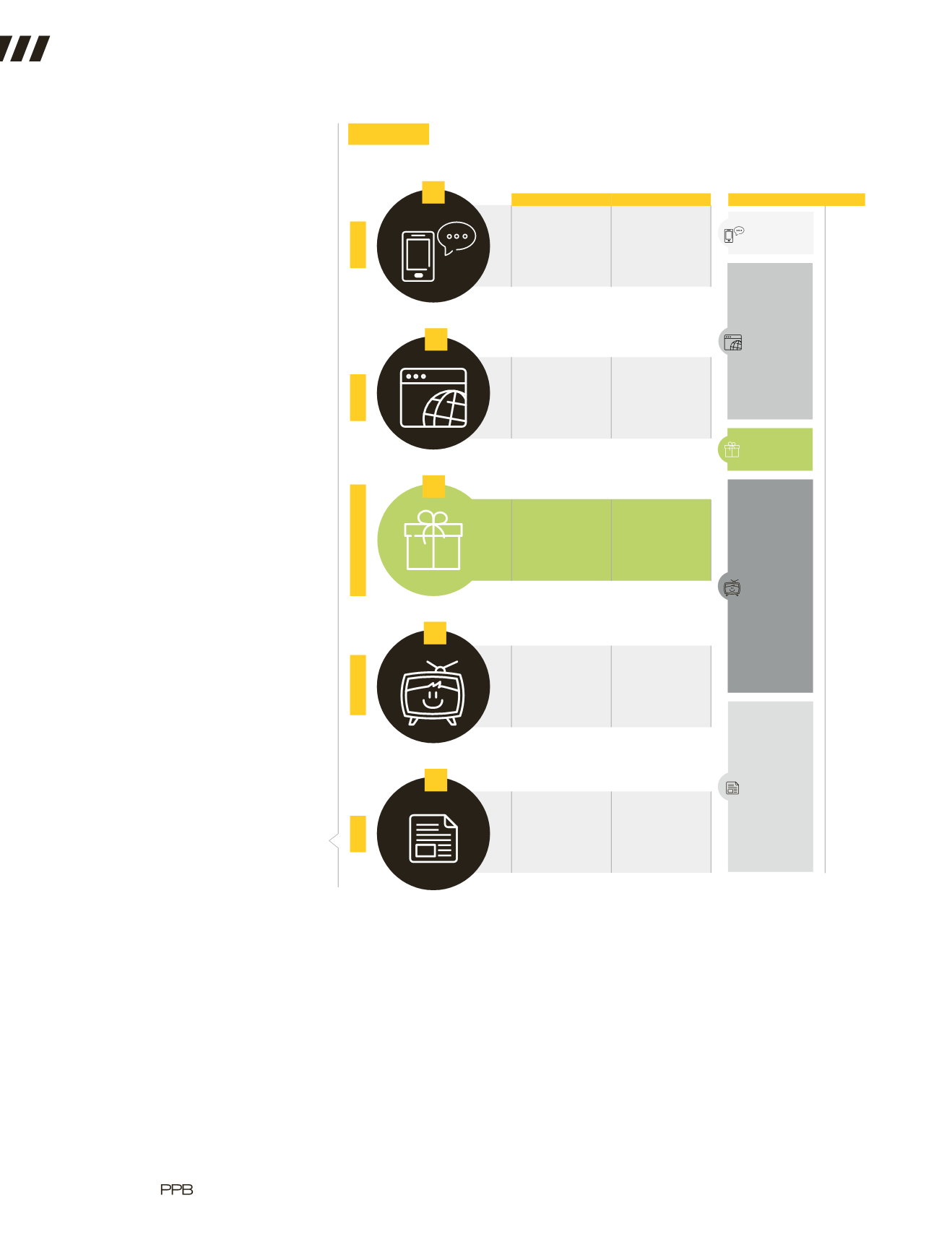

78
|
JUNE 2017
|
and speed in every aspect of life. And
marketers who were once following
a linear and much more predictable
progression to deliver their messages are
now placed in an oversaturated, erratic
maze they must learn to navigate.
The shifting consumer purchasing path
is shaking up the competitive dynamics in
nearly all industries, including advertising.
Marketers today must adjust to the new
consumer expectations or they will be left
behind. The end of the linear consumer
journey can be pinpointed back to 2015
when Google introduced micro-moments,
which give brands exactly one minute
to be where the consumer is looking to
meet their need. This drastically alters
the way you approach consumers,
but most importantly the way you
understand them. Advertising strategies
were once based on a gut feeling or
on the person who made the most
convincing argument; today, advertisers
need to adopt consumer insights.
There is no argument that this new era
of advertising has created a headache for
buyers and sellers of advertising, and for
those responsible for measuring it. Twenty
years ago, the world was a far simpler
place for brand advertisers: broadcast
was king and online was an emerging
fad. Since the turn of the century, there
has been an explosion in the availability
of data. From CRM systems to big data,
companies have become increasingly data
driven. Mobile advertising is the fastest
growing medium, although broadcast
still holds the greatest market share in ad
spend (
Figure 1
).
This is largely due to mobile’s
integration of data and marketing
strategy. Seismic shifts in technology
during the past decade have created a
cookie-crumb trail following consumers
as they navigate their path to purchase.
They are on tablets while watching
television. They use smartphones to price
compare while they shop. Crumbs are
dropped at every stop. This produces a
granular, nearly infinite record of what
consumers see and do, which in turn
enables marketers to gain access to an
unprecedented level of precision—a
strategy many have turned to. This
streamlined approach, however, treats
advertising touchpoints as if each works in
isolation, causing many marketers to get
lost in an unlimited flow of unfiltered data.
We live in a data-rich world, but it’s not
necessarily information-rich. Customer
demographics and buying patterns
tell us the ‘what,’ but not the ‘why.’ To
get ahead, marketers must dig deeper
to capture a clearer understanding of
consumers, their needs and desires.
Understanding consumer insights and
using numbers that truly quantify impact
across platforms will be irresistible to
advertisers who want the full story—and
might just tip the scale as we know it.
More than ever, consumers today are
driven to avoid ads (
Figure 2
). A reported
91 percent of consumers believe ads are
Figure 1.
2015 Advertising Expenditures Ranked By Growth Rate
1
2
4
5
3
MOBILE
ONLINE
PROMOTIONAL PRODUCTS
BROADCAST
growth rate
sales volume
% of market share
0
10%
20%
30%
40%
50%
60%
70%
80%
90%
100%
7
%
29
%
7
%
23
%
34
%
+
66
%
+
18
%
+
4
%
+
3
%
+
1
% $
84.9
B
$
103.4
B
$
20.8
B
$
67.8
B
$
20.7
B
FEATURE
|
PPAI Exclusive Research
















